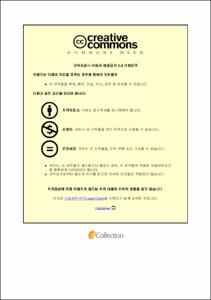경피적 관상동맥 중재술을 시행 받은 급성 심근경색증 환자에서 최적 약물요법의 임상 효과와 시간적 동향
- Abstract
- Background: There are limited data to evaluate the clinical impact and temporal trends of optimal medical therapy (OMT) in patients with acute myocardial infarction (AMI) undergoing percutaneous coronary intervention (PCI) with drug-eluting stents.
Methods: From national health insurance claims data in South Korea, a total of 28,516 patients aged 18 years or older without known history of coronary artery disease, who underwent PCI with drug-eluting stents and discharged as a diagnosis of AMI between July 2011 and June 2015, were enrolled. OMT was defined as the combination of at least 1 anti-platelet drug, statin, β-blocker, and angiotensin-converting enzyme inhibitor/angiotensin receptor blocker. Temporal trends of OMT were assessed. Clinical outcomes were compared between OMT and non-OMT groups.
Results: The average age of study participants was 62.7±12.8 years and 21,571 (75.6%) were men. According to the discharge medication, patients were categorized into OMT (n=17,900 [62.8%]) and non-OMT (n=10,616 [37.2%]) groups. During the follow-up period (median, 2.1 years; interquartile range, 1.2 – 3.2 years), OMT was associated with a significant reduction in all-cause death (hazard ratio [HR], 0.744; 95% confidence interval [CI], 0.658 – 0.841; p <0.001) and all-cause death or coronary revascularization (HR, 0.794; 95% CI, 0.741 – 0.850, p <0.001). However, a substantial reduction in the rate of OMT with a roughly linear trend was noted during the follow-up period. The 6-month, 1-year, 2-year and 3-year OMT rates were 60.1%, 55.5%, 50.8% and 47.0%, respectively.
Conclusion: From an analysis using the national health insurance claims data in South Korea, although a reduction in the rate of OMT from 62.8% to 47.0% over 3 years was observed, OMT provided clinical benefits in patients with AMI undergoing PCI with drug-eluting stents. Further implementation of OMT use in AMI patients is needed.
|목적: 급성 심근경색증 진단 하에 약물 용출성 스텐트를 사용하여 경피적 관상동맥 중재술을 시행 받은 한국인에서 최적 약물요법의 시간적 동향과 임상 효과를 살펴보았다.
방법: 2011년 7월부터 2015년 6월까지 건강보험심사평가원의 자료에서 관상동맥 질환의 병력이 없는 18세 이상의 성인들 중 급성 심근경색증 진단 하에 약물 용출성 스텐트로 경피적 관상동맥 중재술을 시행 받고 퇴원한 28,516명을 연구 대상으로 선정하였다. 최적 약물요법은 항혈소판제, 스타틴, 베타 차단제, 안지오텐신 전환효소 억제제/안지오텐신 수용체 차단제를 각 1종 이상씩 사용한 경우로 정의하였고, 이에 대한 시간적 동향과 임상 효과를 알아보았다. 교란 변수의 영향을 최소화 하기 위해 성향점수 짝짓기 방법을 사용하였다.
결과: 전체 연구 대상자 28,516명의 평균 연령은 62.7±12.8 세 였고, 21,571 (75.6%) 명이 남자였다. 퇴원시 처방된 약물을 기준으로 최적 약물요법 군과 (n=17,900 [62.8%]) 비최적 약물요법 군으로 (n=10,616 [37.2%]) 구분하였다. 추적 관찰 기간(중앙값, 2.1 년; 사분범위, 1.2-3.2 년) 동안 최적 약물요법은 모든 원인에 의한 사망과 (위험비, 0.744; 95% 신뢰구간, 0.658-0.841; p <0.001) 모든 원인에 의한 사망 또는 관상동맥 재개통 사건을 (위험비, 0.794; 95% 신뢰구간, 0.741-0.850; p <0.001) 감소시켰다. 그러나 퇴원시 최적 약물요법이 처방된 비율은 62.8% 였고 3년 후 47.0% 로 지속적으로 감소하는 양상을 보였다.
결론: 최적 약물요법은 급성 심근경색증 진단 하에 약물 용출성 스텐트로 경피적 관상동맥 중재술을 시행 받은 한국인에서 사망 및 관상동맥 재개통 사건을 감소시킨다. 그러나 최적 약물요법이 처방된 비율은 추적 관찰 기간 동안 지속적으로 감소하는 양상을 보였는데, 향후 최적 약물요법의 처방률을 높인다면 더 좋은 임상 경과를 기대할 수 있을 것이다.
- Issued Date
- 2019
- Awarded Date
- 2020-02
- Type
- Dissertation
- Keyword
- 최적 약물요법; 급성 심근경색증; 경피적 관상동맥 중재술; 약물 용출성 스텐트
- Alternative Author(s)
- Yun Seok Kim
- Affiliation
- 울산대학교
- Department
- 일반대학원 의학과
- Advisor
- 이지호
- Degree
- Doctor
- Publisher
- 울산대학교 일반대학원 의학과
- Language
- kor
- Rights
- 울산대학교 논문은 저작권에 의해 보호받습니다.
- Appears in Collections:
- Medicine > 2. Theses (Ph.D)
- 파일 목록
-
-
Download
 200000285004.pdf
기타 데이터 / 607.58 kB / Adobe PDF
200000285004.pdf
기타 데이터 / 607.58 kB / Adobe PDF
-
Items in Repository are protected by copyright, with all rights reserved, unless otherwise indicated.